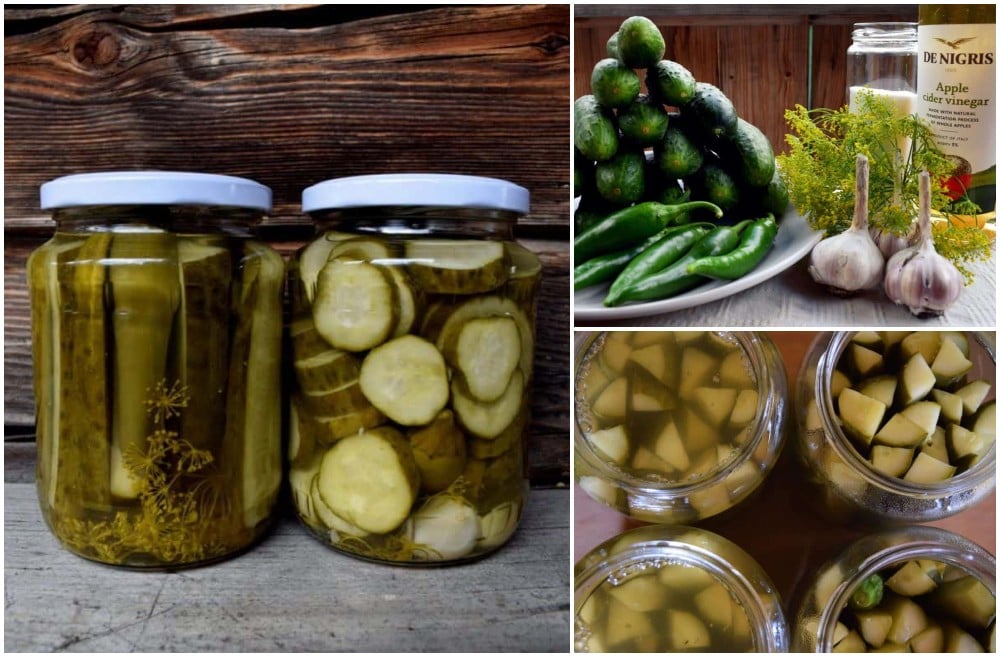
Store-bought pickles come with a delightful crunch, but they also come with added sugar and a ton of salt, often accompanied by a hint of preservatives and artificial colors. Hello, Yellow 5!
To make the perfect, crunchy homemade pickles you need and desire, all you have to do is create a balanced brine.
If you aren’t one to measure ingredients in the kitchen, now is the time to throw that inhibition aside and make absolutely sure that the vinegar to water ratio is just right.
There is even a pickling brine calculator to help you out.
Basic ingredients for homemade pickles
Exploring the art and beauty of self-reliance, as all homesteaders strive for, you’ll gradually get into the mindset of making your own pickles – even 25 jars in one day!
That may be enough for the entire year, if you spread out the goodness. Though you needn’t stop at pickles – zucchini relish and pickled garlic season is coming soon.
Here is your ingredient list for making basic pickles, use as many spices as you enjoy and experiment with different flavor combinations to find out what you like best:
- fresh cucumbers
- apple cider vinegar, or other vinegar with 5% acidity
- salt – pickling and canning salt, kosher or sea salt (make sure it is additive and anti-caking agent free)
- garlic
- hot peppers
- fresh herbs – dill flowers and leaves, basil
- spices – turmeric, dill seeds, peppercorns, anise seed, bay leaves, coriander seeds, nutmeg
- horseradish
- water
Choosing the best cucumbers for canning
If you want to preserve whole cucumbers, you’ll want to look for the smallest cucumbers you can find. Make sure they are firm, reasonably uniform in size, with a blemish-free thick, green skin – and always choose the unwaxed ones!
The cucumber season usually starts in late June through early July, but if you are growing cucumbers in your own garden, you’ll find that perhaps you need to can in small batches as they won’t be ready all at the same time.
It may also happen that the growing season isn’t what you expect. Unexpected things happen to any gardener: the weather gets too cold, it rains too much, or too little, the morning fog invites fungus, and the harvest is less than desirable. Do a random taste test to ensure the crop is not bitter.
Of course, there is always the local farmers market for obtaining the glut of ideal cucumbers. Even then, be prepared to adapt and change your pickling plans.
The window for making pickles is short and if all you can find is larger cucumbers, don’t despair! If the cukes are too long/wide for your jars, slice them and make spears instead. Work with nature, not against it.
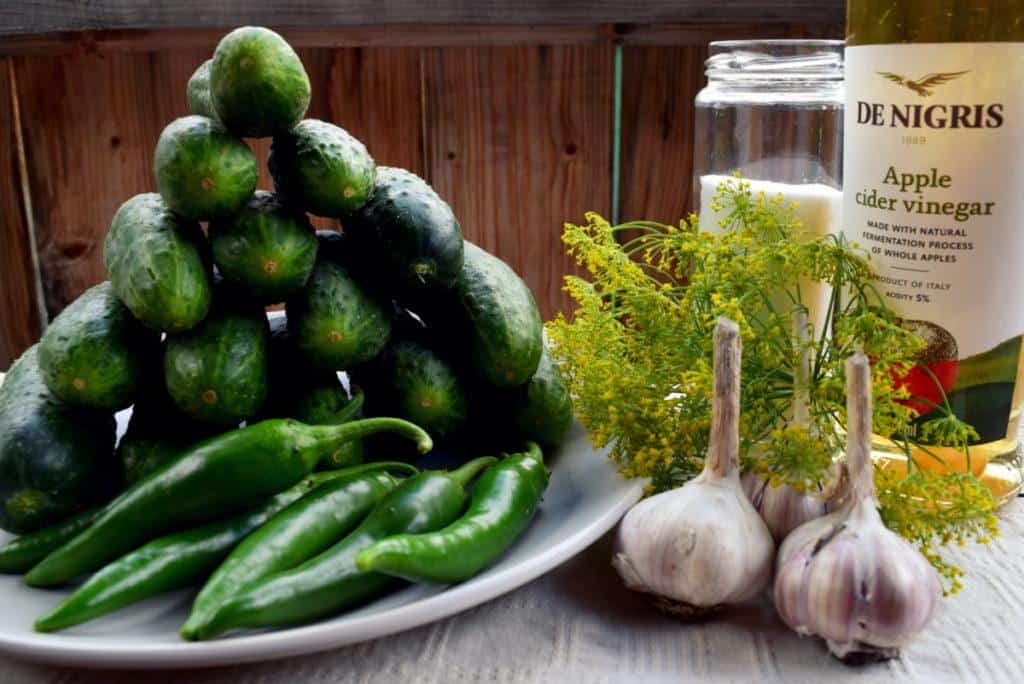
Step-by-step: Homemade dill pickle slices
1. Collect your fresh ingredients, salt and apple cider vinegar, then raid your spice shelf or garden for added flavors.
2. Cut the ends from the cucumbers and slice them evenly in rounds, or spears. 1/4″ thick is a good slice to shoot for.

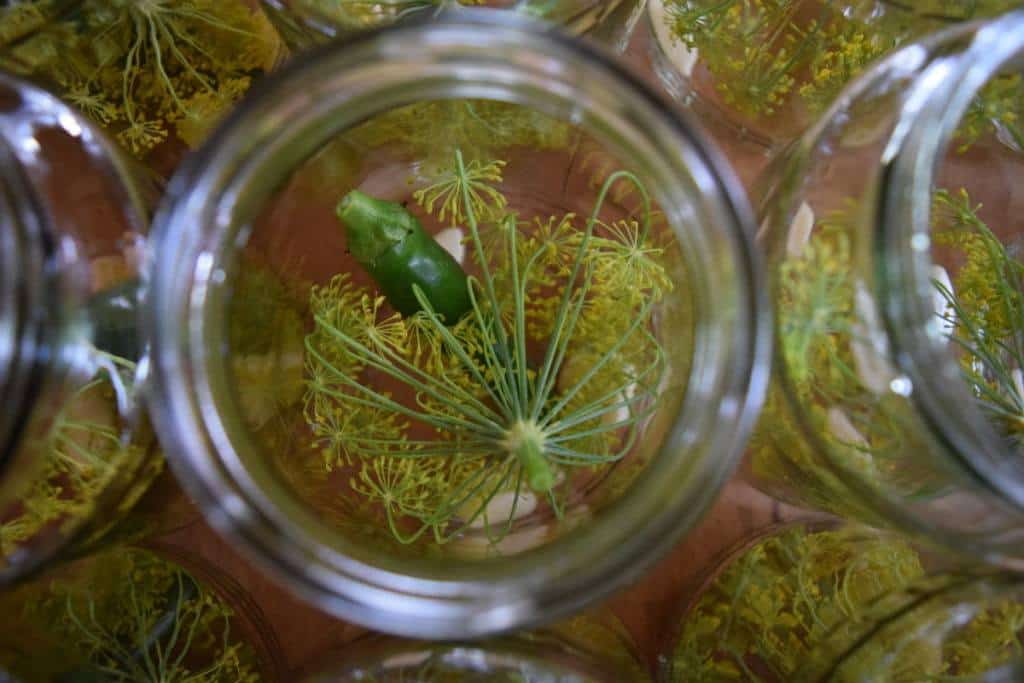
3. Fill the jars with garlic and herbs, then pack tightly with cucumbers.
4. Make the pickle brine and bring to a boil (in a non-reactive stainless steel or enamel pot) on the stove:
- 1 liter (4.2 cups) apple cider vinegar
- 1 liter (4.2 cups) water
- 65 grams (1/2 cup) salt
Depending on how many jars of pickles you are canning, adjust this amount of brine accordingly.
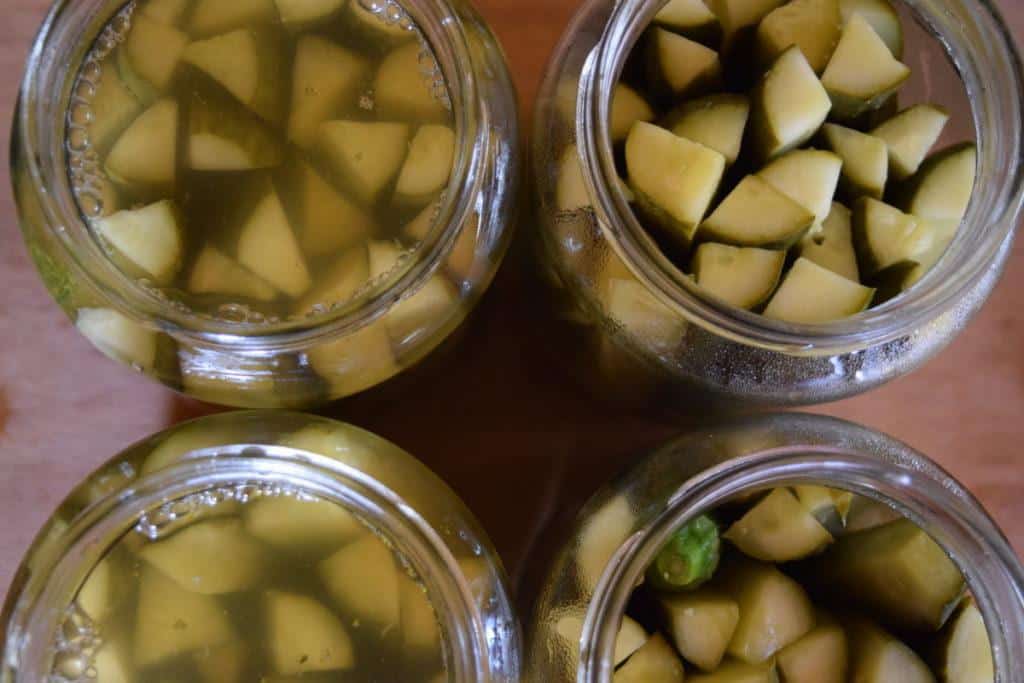
5. Pour hot brine over the packed pickles, leaving 1/2″ of headspace. Keep everything clean and be sure to wipe any spills on the rim with a damp paper towel.
Useful pickling tip: 6 cups of brine (half water, half vinegar) should be enough for 4 pounds of pickling cucumbers.
6. Put the lids on the jars and carefully lower them into a hot water bath, making sure the water is one or two inches above the jars. Bring to a gentle boil and leave for 10 minutes.
7. Carefully remove jars with a jar lifter and allow them to come to room temperature slowly.
8. Leave them to set for 24 hours, then check that all lids have sealed. If they haven’t, you get to eat pickles right away. Just keep them in the fridge for up to two months – if they last that long!
9. Store your pickles in the pantry, or in a cool, dark place for up to a year. Make sure to add a label with the date, and wait at least two weeks before opening the first jar, allowing the flavors of garlic and dill to meld together.
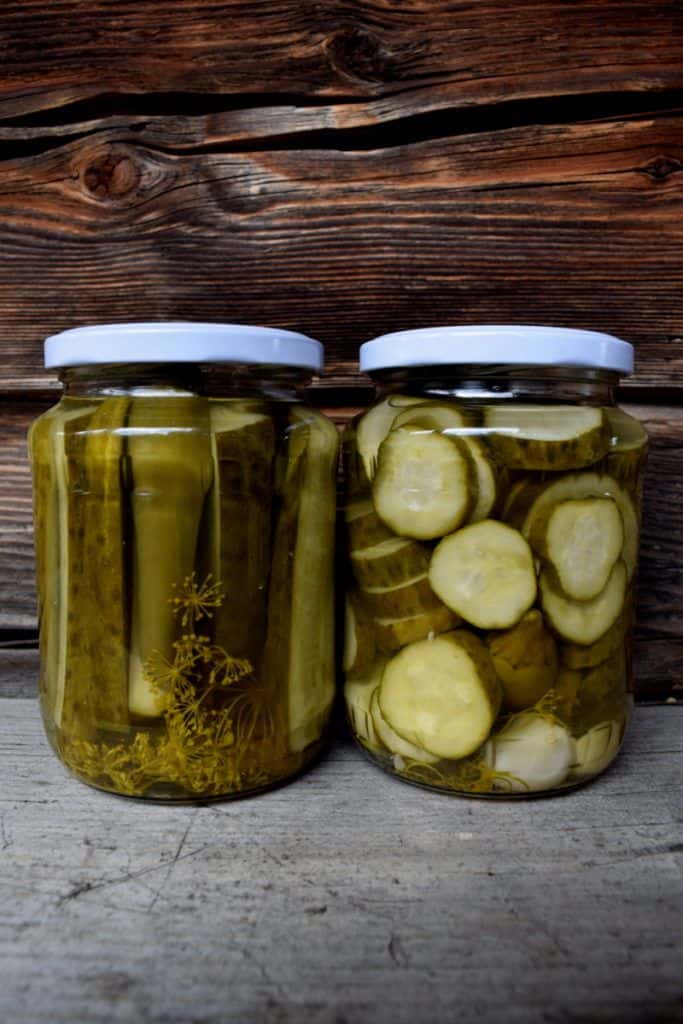
Optional: To prevent your pickles from becoming limp, some recipes call for soaking the cucumbers in a non-reactive bowl (think ceramic or glass) with a solution of 2 1/2 quarts of water with 3 tablespoons of salt. Let this sit, covered, for anywhere from 3 to 12 hours, then drain the slices and proceed with the water bath method of canning.
Drink your homemade pickle juice!
You already know the benefits of drinking apple cider vinegar, now that you have made your homemade dill pickle slices in ACV, there is no reason to let any of it go to waste.
Leftover pickle juice is wonderful for:
- tenderizing meat
- boiling potatoes in it
- a post-workout drink
- re-pickling juice (toss in some fresh sliced veggies, or hard boiled eggs, and store in the fridge)
- salad dressing or adding to mayonnaise
- relieving heartburn
- a rehydration cure – it balances electrolytes and replenishes sodium levels
- dill pickle soup
Benefits of fermented dill pickles
Most pickle recipes include vinegar (apple cider vinegar, rice vinegar, wine vinegar or white vinegar) as a preservative – and to give it that characteristic sour crunch. However, homemade pickles can be made without vinegar too!
See, the addition of vinegar prevents natural fermentation. This results in a cucumber without any probiotics. As you sterilize everything and eliminate the dangerous bacteria – Clostridium botulinum – you are also killing gut-friendly lactic-acid bacteria and other beneficial microbes.
Fermented foods are easier to digest than their raw or cooked counterparts, they have an increased nutritional value and they are uncomplicated to make too. Why not crunch in the best of both worlds? Make some pickles in brine, and try them fermented too.
Want to follow the best recipe for naturally fermented pickles?
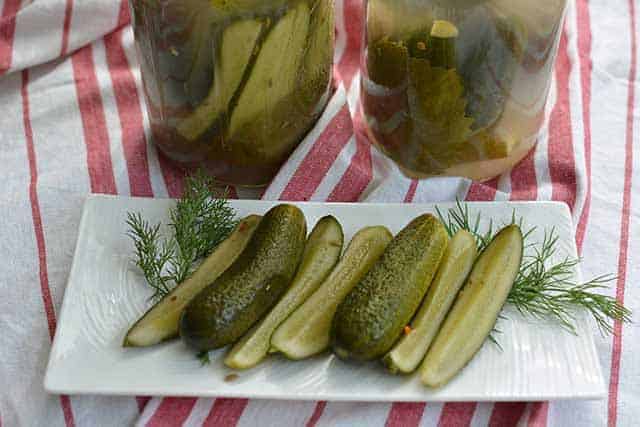
You’ll find the complete guide to naturally fermented pickles here.
Whichever way you choose to preserve your cucumbers, know that you are on your way to canning whatever fruits and vegetables you choose.
Knowing the ingredients in what you cook, serve and eat, is empowering in every way, especially when you are looking after your health in a holistic way.
Did we mention, a jar of homemade pickles makes for a magnificent gift?
Get gardening and start filling your pantry with pickles, chutneys and jams of all sorts!
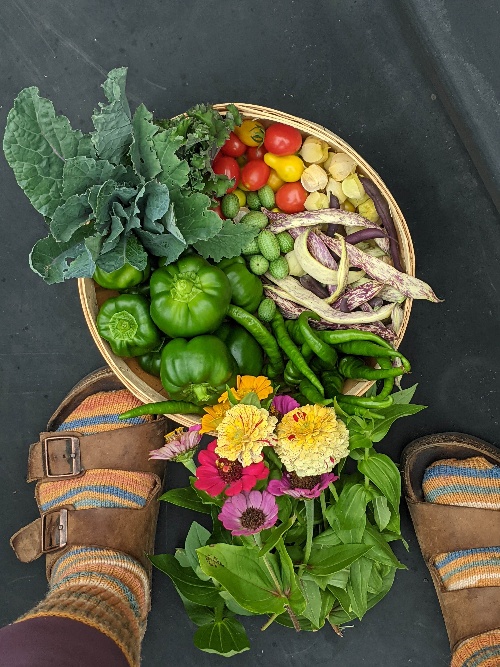
Get the famous Rural Sprout newsletter delivered to your inbox.
Join the 50,000+ gardeners who get timely gardening tutorials, tips and tasks delivered direct to their inbox.

